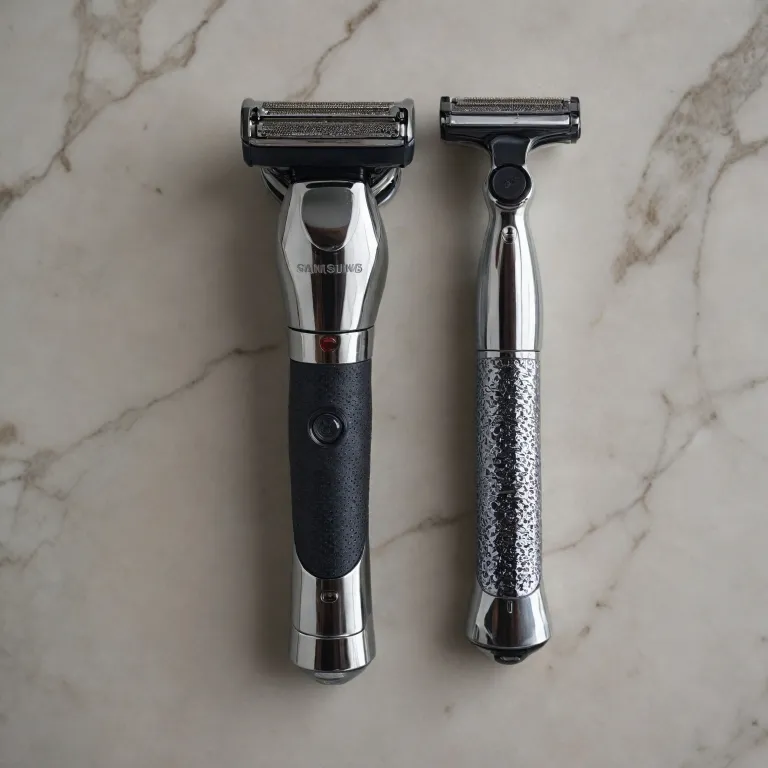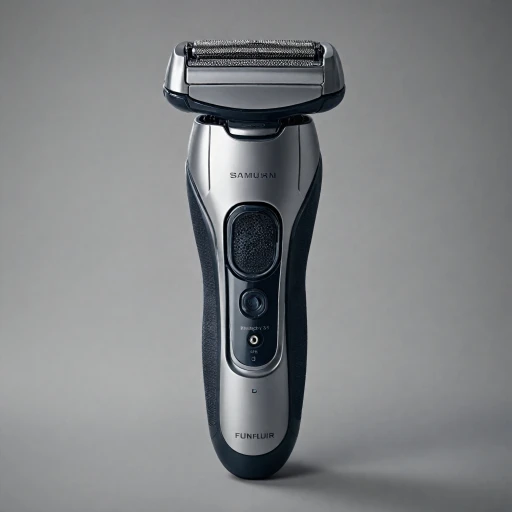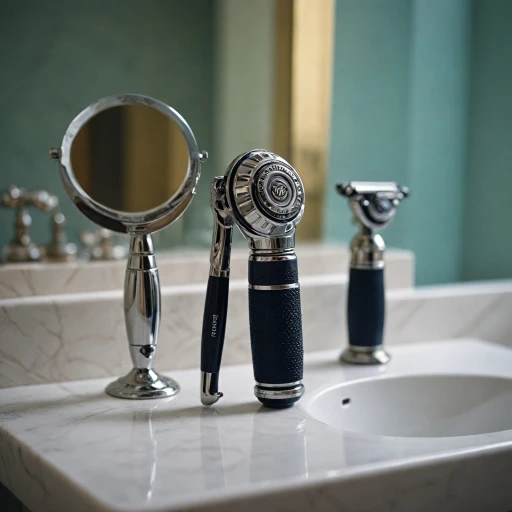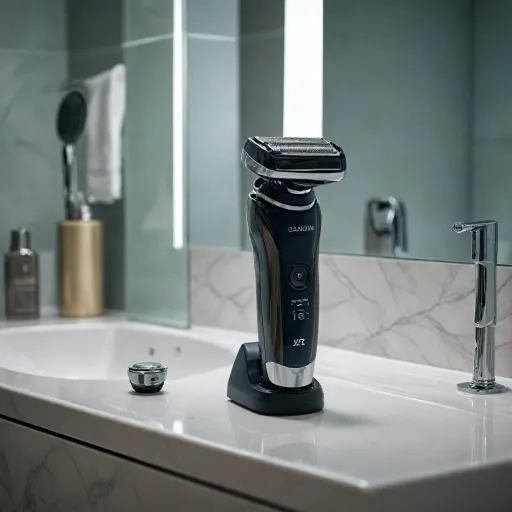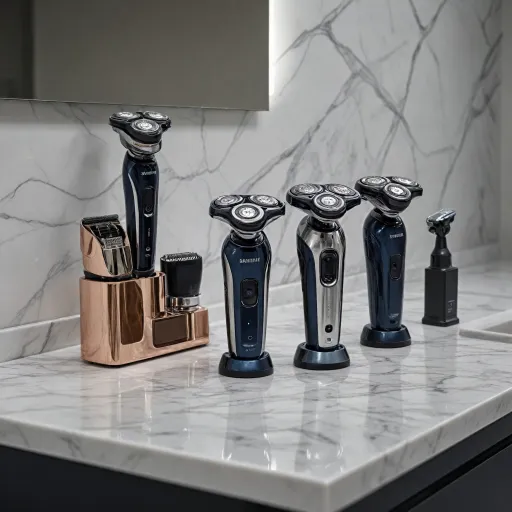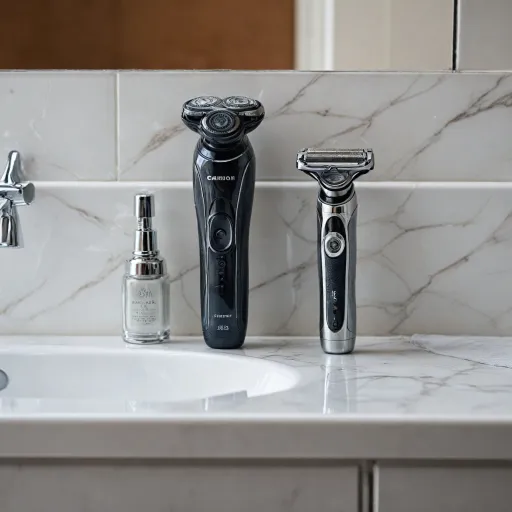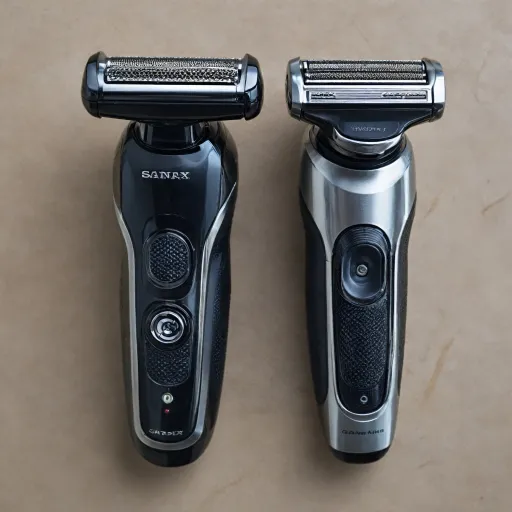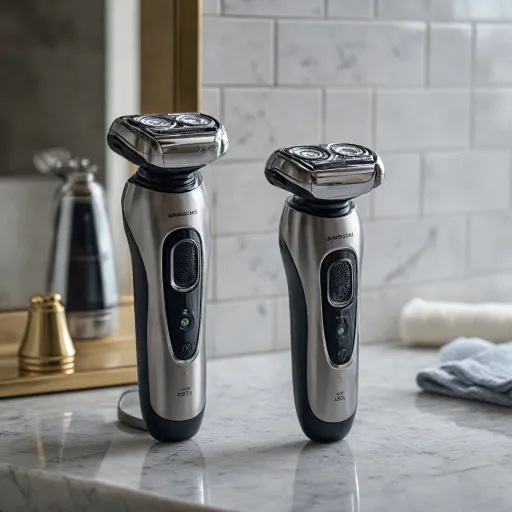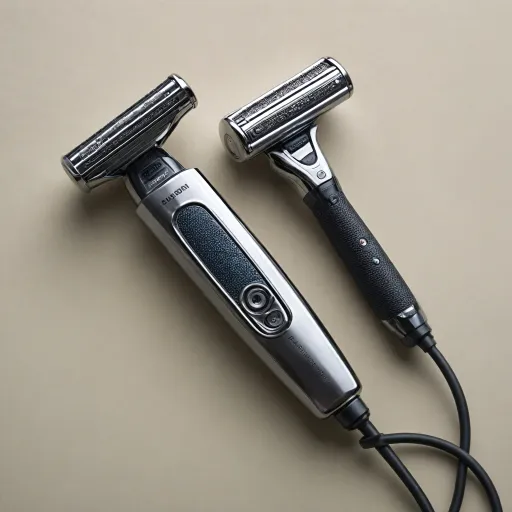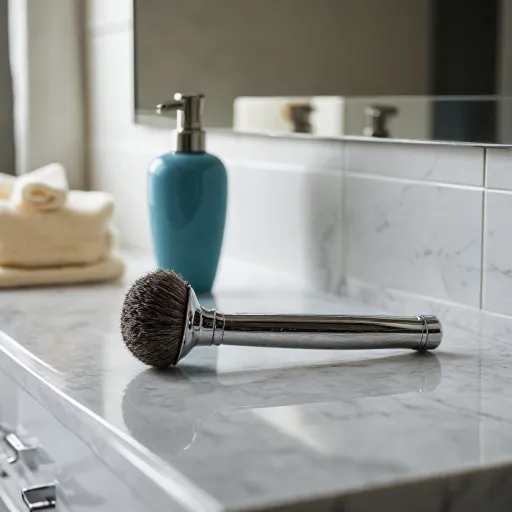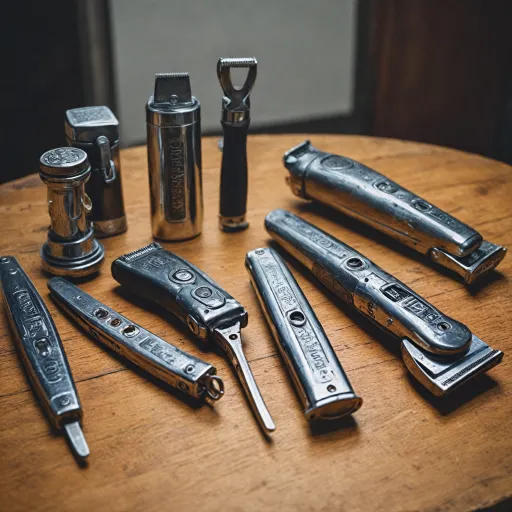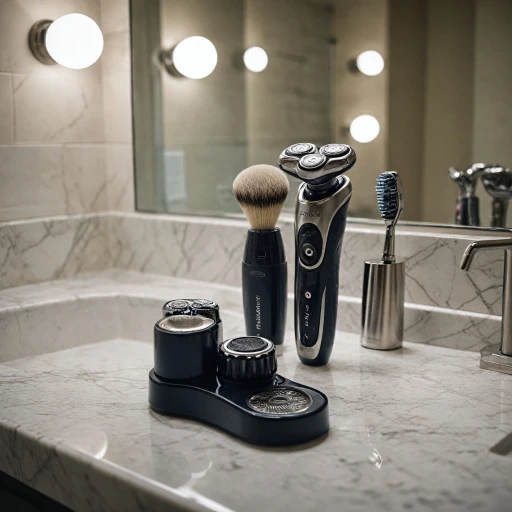
Understanding Foil Shavers
Delving into the World of Foil Shavers
Choosing between different shaving tools can significantly impact your daily grooming routine. Among the myriad of options available, foil shavers offer a unique approach to the art of electric shaving. By understanding how a foil shaver works, you can better evaluate whether it's the right match for your needs.
Foil shavers, with their distinct high-speed oscillating blades, are designed to cut facial hair accurately and effortlessly. Unlike their rotary counterparts, which use spinning heads, foil shavers utilize straight, thin bits of metal called foils that cover the blades. This protective layer helps reduce irritation, making a foil shaver particularly appealing for those with sensitive skin. It enhances the shaving experience by enabling a closer shave without causing razor burn.
The key advantage of foil shavers is their ability to provide a precise and consistent shave. They excel at handling flat-lying hairs and longer strands which can be a challenge for some alternatives. Typically featuring between two to four shaving heads, foil shavers can navigate across the face and neck contours, ensuring a smooth and effortless shave every time.
It's important to weigh factors like your facial hair type, skin sensitivity, and grooming preferences. These considerations can guide your decision when comparing the performance and efficiency of different shaving tools. Whether seeking the best foil electric shaver for a dry shave or searching for your next reliable grooming companion for head shaving, understanding the nuances of foil shavers is an essential step in making an informed choice.
Stay tuned as we further explore other shaving technologies, offering insights into how they may align with your personal grooming habits.
The Classic Razor Experience
An Exploration of Traditional Shaving Practices
Shaving with a traditional razor offers an experience that some say can't be matched by modern electric alternatives. It involves a more hands-on approach, where the user applies shaving cream and navigates the facial contours with care. This hands-on technique often delivers a closer shave. The best part about using a razor is the control you have. With a sharp blade, you can maneuver around the face, achieving precision cuts. However, this method requires a steady hand, particularly around sensitive areas like the neck or under the nose. However, the classic experience isn't without its drawbacks. Frequent use of a razor can lead to razor burn, particularly for those with sensitive skin. Furthermore, maintaining a sharp blade necessitates regular replacements, adding to the cost over time, a consideration that is less pronounced with an electric shaver. As you navigate through these options, for those interested in delving deeper into the nuances of traditional and rotary options, exploring the art of rotary shaving can provide additional insights into making a more informed choice. In conclusion, the choice between a razor and an electric shaver may come down to personal preference and lifestyle needs. But understanding the traditional razor technique is key to appreciating the broader landscape of shaving options available today.Performance and Efficiency
Evaluating Power and Efficiency in Shaving Devices
When it comes to comparing the performance and efficiency of electric shavers and classic razors, understanding the mechanics of their operations is crucial.
Electric Shavers offer a unique take on the shaving experience with two main varieties: foil shavers and rotary shavers. Foil shavers employ thin metal strips covering oscillating blades which provide a straight-line cut, making them particularly effective for facial hair that grows in uniform directions. This feature gives foil shavers an edge in offering a close shave.
On the other hand, rotary shavers are designed with circular heads that work well over the contours of the face and can tackle hair growing in different directions. This makes them an excellent choice for a versatile shaving experience.
- Foil shavers are known for their precise cut and are often recommended for everyday use owing to their efficient performance on short hair.
- Rotary shavers excel in maneuverability, ideal for navigating the jawline and chin, providing a consistent and comfortable shave.
Choosing between these two may depend on the unique requirements of your facial hair and personal comfort.
Classic Razors—whether disposable or with replaceable blades—rely on manual control and skill for optimal performance. The direct contact of the blade with the skin often results in a closer cut, but it may increase the chance of razor burn and nicks, especially for those with sensitive skin.
Ultimately, each method offers different efficiencies: electric shavers shine in convenience and speed, easily adjustable for a dry shave, while traditional razors provide the closest shave with potential for remarkable precision, albeit with more preparation involved.
Skin Sensitivity and Comfort
Comfort and Consideration
When it comes to shavers, skin sensitivity and comfort can be a deciding factor for many individuals. Both foil and rotary electric shavers offer distinct benefits and considerations for different types of skin. Foil shavers are renowned for providing a closer shave. Their thin, perforated metal sheets, or foils, glide smoothly over the skin, making them a preferred choice for those with sensitive skin. The precision-cutting blades oscillate under the foil, reducing direct contact with the skin and thereby minimizing irritation and razor burn. Rotary shavers, on the other hand, feature multiple shaving heads designed to adapt to the contours of the face. This flexibility can be advantageous for individuals with thicker facial hair or those who require additional maneuverability around areas like the chin and jawline. However, the additional movement may not be suitable for every skin type, as the circular motion of the rotating blades can sometimes lead to discomfort for those with more sensitive skin types. Both types of electric shavers offer dry and wet shaving capabilities. This versatility allows for a more customized grooming experience, accommodating various preferences, from dry shave enthusiasts to those who prefer using shaving cream for added comfort. For those concerned with facial skin health, investing in a quality shaver with the appropriate technology can make a significant difference in daily grooming. Take into account the unique needs of your skin to choose the best option, be it a foil or rotary shaver, to ensure a smoother, more comfortable shave.Maintenance and Longevity
Keeping Your Shaving Tools in Prime Condition
When it comes to maintaining your shaving tools, both foil and rotary shavers have their own set of needs. Foil shavers typically have a thin, perforated metal foil covering the blades. This metal layer is delicate and requires specific care to ensure its longevity and effectiveness. Regular cleaning of the foil will prevent the build-up of hair and skin residues that could dull the blades or cause skin irritation.
On the other hand, rotary shavers have multiple rotating heads, which may trap hair and debris over time. The best practice to maintain efficiency is to clean each shaving head after every use, making sure all parts are dry before reassembly. This can help in preventing razor burn and ensuring a closer shave.
For both types of electric shavers, regular lubrication of the blades will extend the lifespan of the parts, encouraging a smoother shave. Replacement heads and foils are available from most manufacturers and should be replaced according to your shaver's manual - typically every 12 to 18 months.
Routine checks for wear can also indicate if an electric shaver needs new blades or heads. Such proactive maintenance not only enhances performance but also safeguards sensitive skin from unexpected cuts or discomfort.
Ultimately, a well-maintained electric shaver, be it rotary or foil, is key to a seamless and efficient shaving experience. Consistent care will not only prolong the equipment's longevity but also ensure each shave is as effective and comfortable as the first.
Making the Right Choice for You
Tailoring Your Choice to Fit Your Needs
When deciding between a foil shaver and a classic razor, consider your unique preferences and lifestyle needs. Both options have their merits, depending on what you prioritize most in your shaving experience.- Shaving Experience: If you're looking for a closer shave, especially for facial hair, an electric shaver with foil technology could be the best option. Foil shavers provide a precision cut with their fine blades and protective foils, making them ideal for maintaining a smooth, consistent shave.
- Skin Sensitivity: For those with sensitive skin, the choice between a foil and traditional razor is crucial. Electric shavers, particularly foil ones, are generally designed to minimize razor burn and skin irritation. They work gently by cutting facial hair just above the skin surface, which reduces the risk of cuts and nicks.
- Maintenance and Usage: How you maintain and use your shaving tool also plays a role. Electric shavers often require less frequent maintenance compared to traditional razors. Consider the longevity and ease of cleaning electric shavers, which typically involves rinsing the shaving heads and replacing the blades periodically.
- Lifestyle Considerations: If you prefer a dry shave or need to shave on-the-go, an electric razor could be more convenient. This option supports quick touch-ups with minimal preparation, whereas a traditional razor might be better for those who enjoy the ritual of wet shaving.
